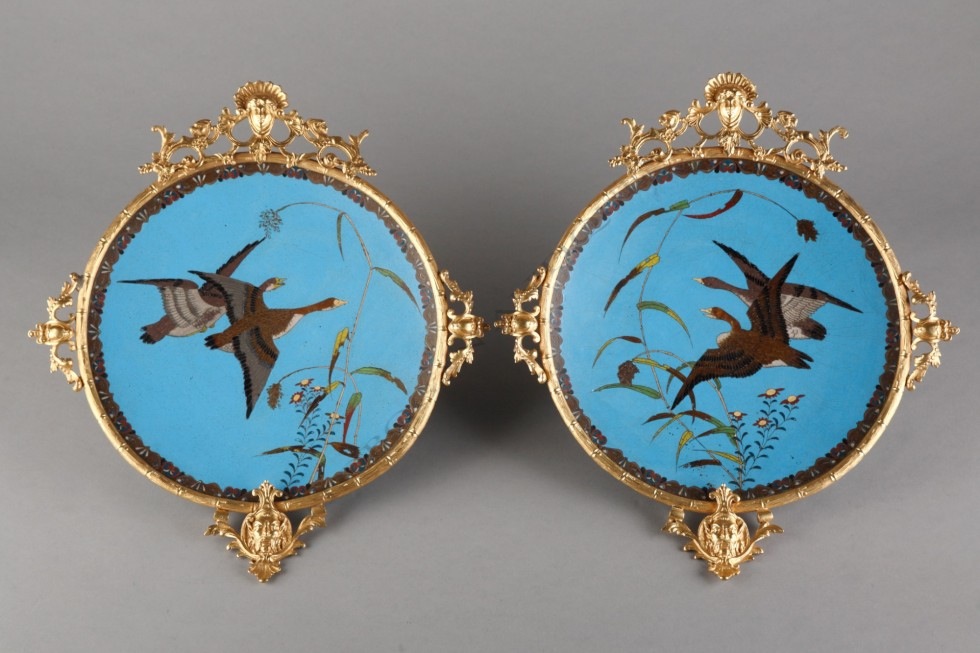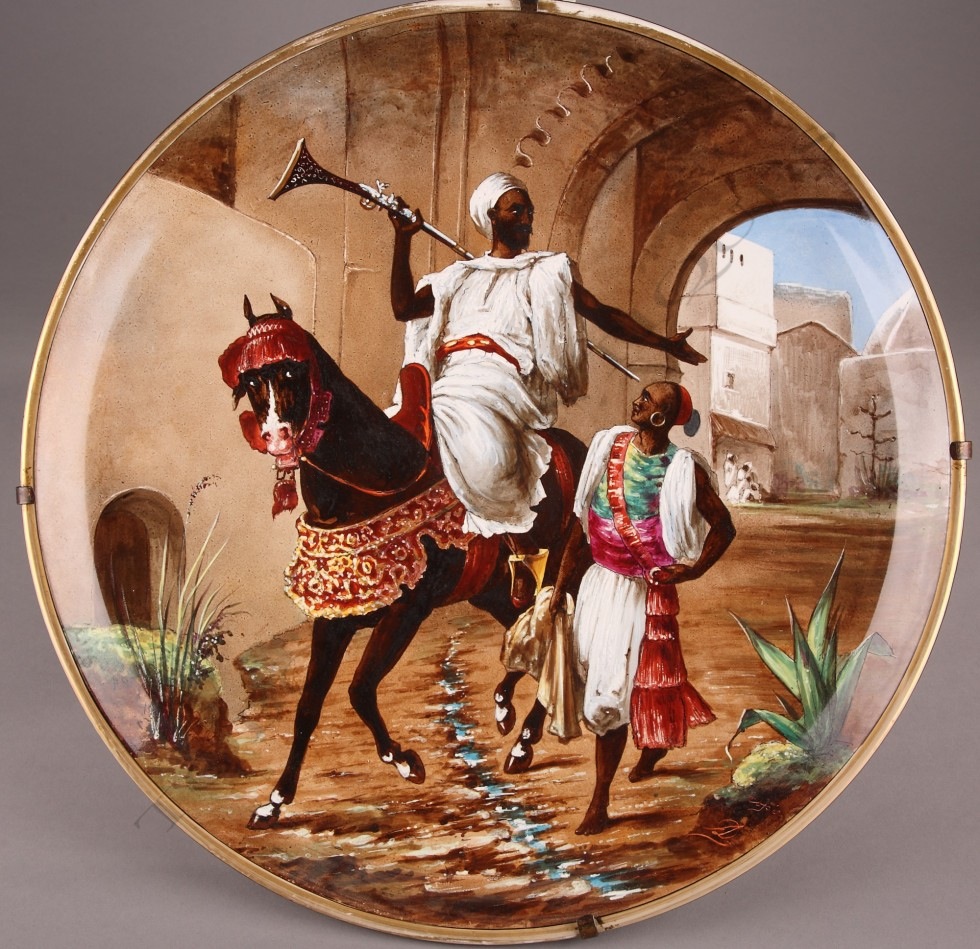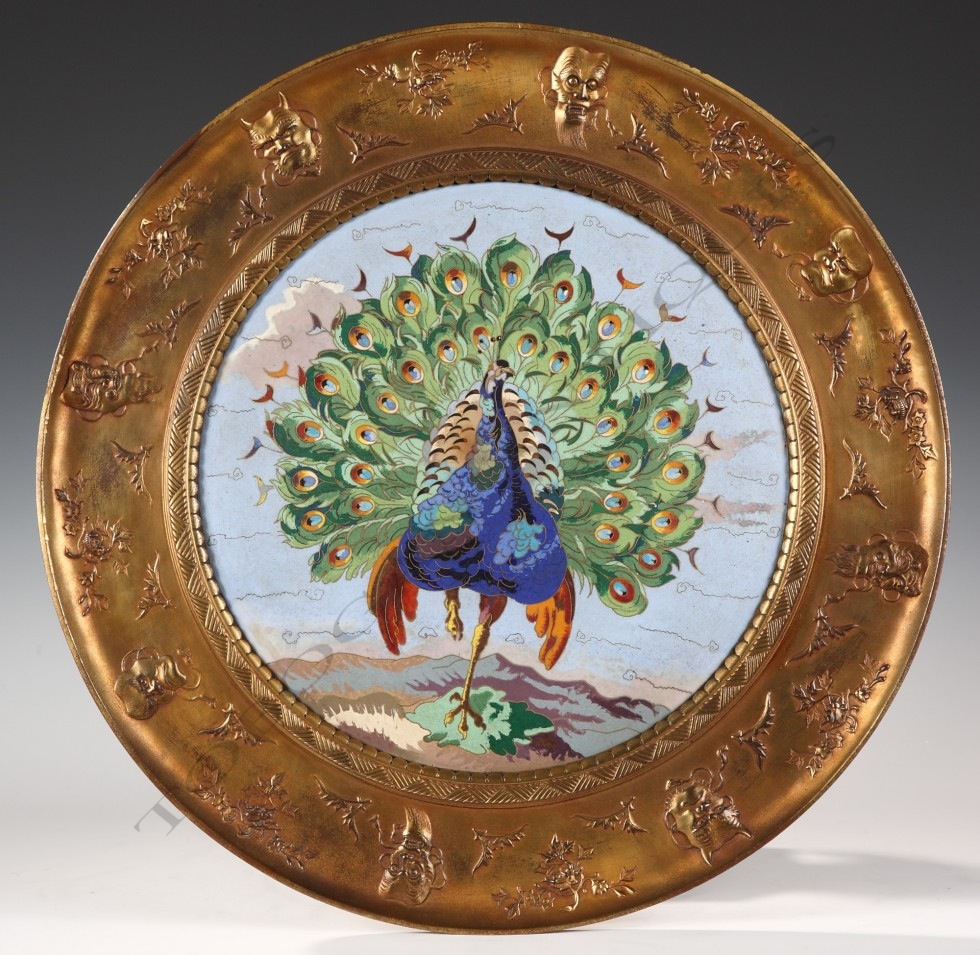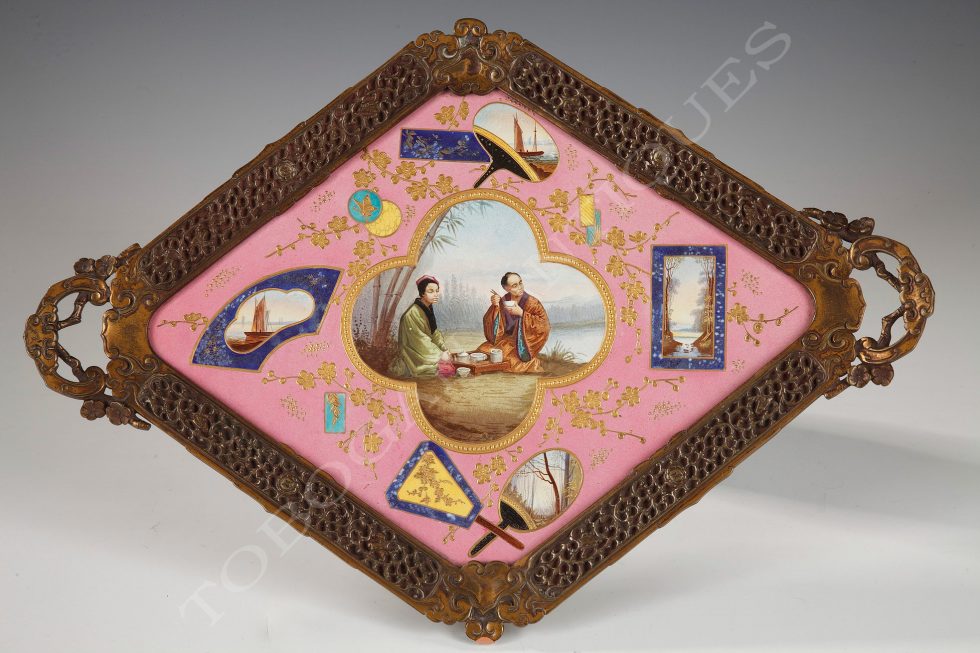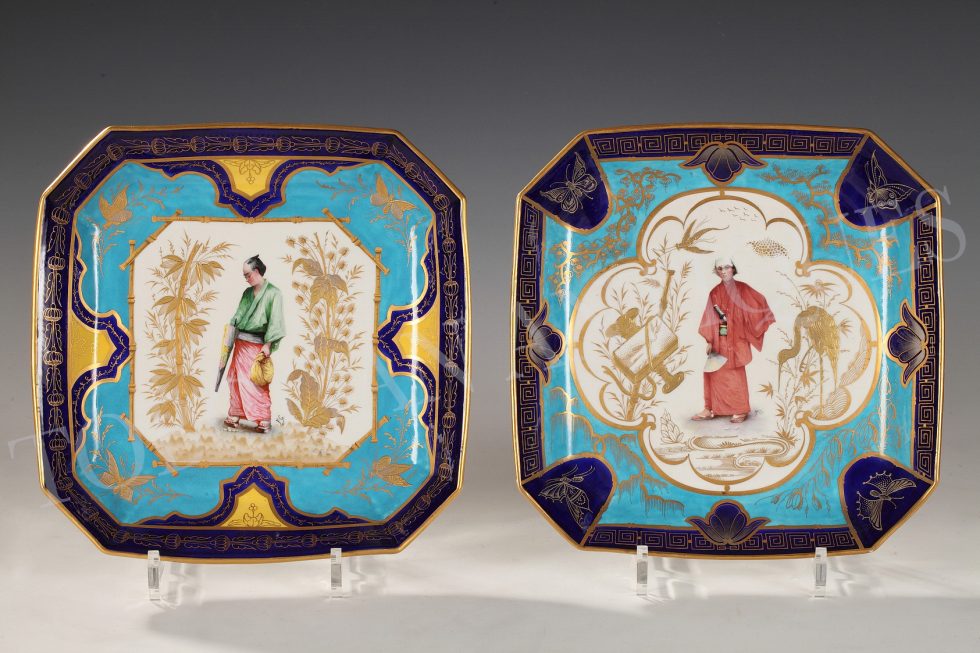Ref. 1048/5
A. Willms
Designer
(19th century)
Elkington
Silversmith
(19th century)
(attributed to)
Japanese style Plate
England
Circa 1875
Diameter : 53 cm (20,8 in.)
Important tray made in gilded bronze and « cloisonné » enamel. Ornamented with a centering polychrome enameled peacock plaque, made of very high standard quality, mounted on a gilt-bronze dish, decorated in relief with Japanese Nô theater masks.
Biography
The great Birmingham firm of Elkingtons, was largely the creation of George Richards Elkington (1800-1865), who worked from 1824 in Birmingham as a manufacturer of silver-mounted scent bottles. By 1829 the business had expanded sufficiently for a branch to have been established in London. In the late 1830’s the Elkingtons began making experiments to apply the principles of electro-metallurgy to gilding and plating with silver and in 1840 the patent was at last taken out. Elkingtons owed their rise to a position amongst the most important silversmiths of the country to their exploitation of this new process and the two of the most famous designers then employed, both of them French, Albert Wilms (1827-1899) and Morel-Ladeuil (1820-1888), who helped to make Elkingtons’ reputation with their elaborate exhibition pieces.
Albert Willms was apprenticed as modeler and engraver to Klagman, Dieterle and Constant in Paris before working for Morel & Co. in London in 1848. On his return to Paris he was employed by the great Parisian silversmiths including Christofle and Froment-Meurice, for whom he designed pieces to be presented at the 1855 Universal Exhibition in Paris. It was during this period that he joined the firm of Elkington in London as head decorator. Elkington was soon to become one of the first to produce refined pieces in « champlevé » enamel in the Chinese and Japanese styles, which were presented with great success at the London Universal Exhibition in 1862 (see Masterpieces of Industrial Art & Sculpture at the International Exhibition 1862, J.B. Waring, London, 1863, III, pl. 211). Willms’ « champlevé » enamels could not be compared, however, with the delicate « cloisonné » enamels exhibited by Japan at the Universal Exhibition in Paris in 1867. This explains why Elkington adapted the ancient Japanese technique to produce pieces according to European taste and custom. Followings the 1867 Exhibition all the major European artists rivaled in ingenuity for the 1873 Universal Exhibition in Vienna. In London Albert Willms presented his luxurious vases and cups in « cloisonné » enamel for Elkington (see Illustrations of Art Manufacturers in the Precious Metals exhibited by Elkington & Co., Inventors, Patentees and Manufactures of electroplate, 1873), whilst in Paris, Ferdinand Thesmar (1843-1912) produced in the workshops of Ferdinand Barbedienne (1810-1892) a tray decorated with a golden pheasant in « cloisonné » enamel on copper and Emile-Auguste Reiber (1826-1893) designed for the Christofle firm, a large clock with matching candelabras in the Japanese style (Musée d’Orsay, Paris, Inv. O.A.O. 1360-1361) with « cloisonné » enamels executed by Antoine Tard. Albert Willms never the less became a specialist of « cloisonné » enamel on gilt metal between 1870 and 1876. The Universal Exhibitions where Elkington presented to the public his latest creations in the Japanese style, assured him a resounding success, as at the Philadelphia Exhibition in 1876 with an extensive set of vases and dishes in « cloisonné » enamel (reproduced in Contributions to the Centennial and International Exhibition at Philadelphia, 1876, London, 1876). Referring to his enamels the critics said « They surpass by far modern Chinese and Japanese works and approach the exquisite beauty of ancient Japanese pieces ».
Contact us
Tobogan Newsletter
If you want to be up-to-date with our new acquirings you can sign up to our newsletter.


